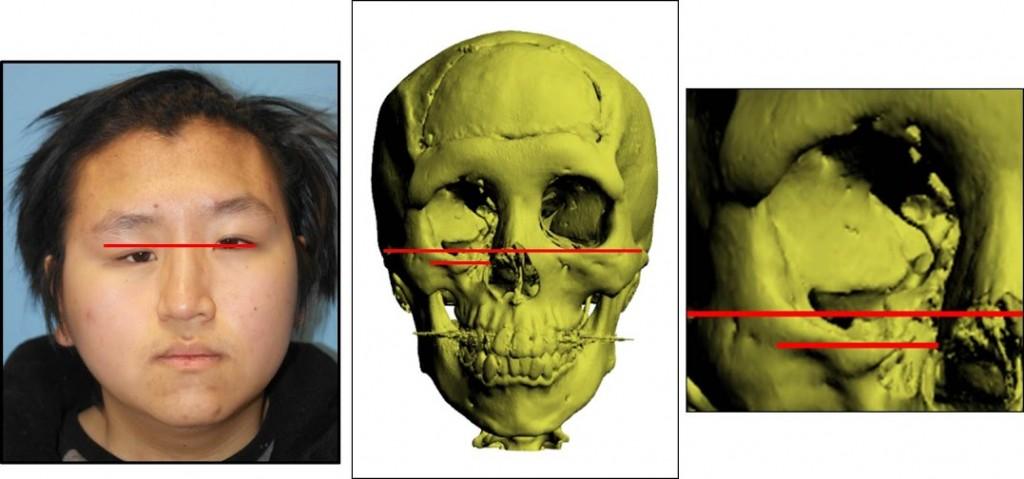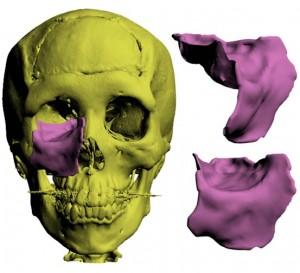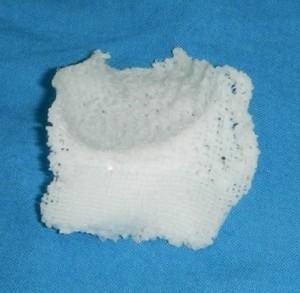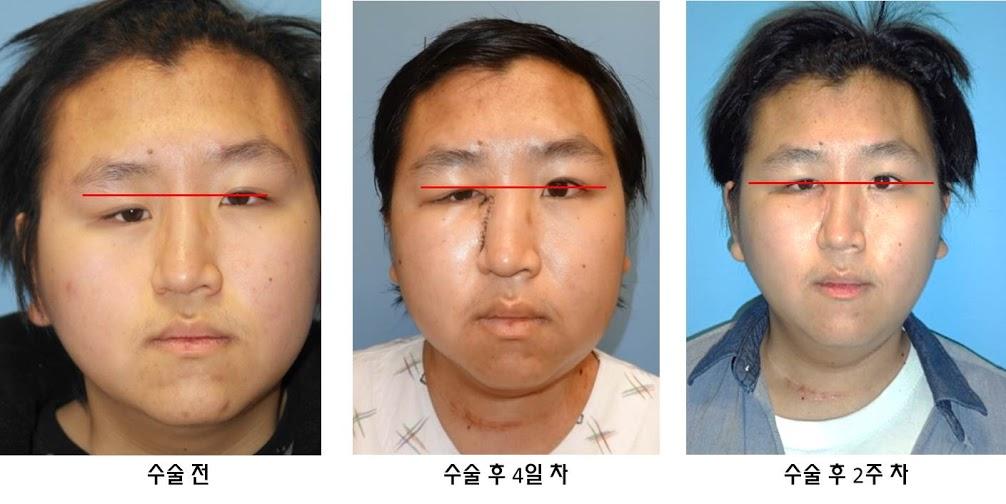If you’ve been keeping up with the news, you are aware that 3D printing of medical implants and devices is not such a rare thing anymore; what is, however, still rare is the use of 3D printed scaffolds for tissue regeneration. In the case of a male patient who had trauma and deformity to the right side of his face after a tumor removal ten years ago, Korean scientists decided he was a candidate for a 3D printed implant made of biodegradable polymer for bone tissue regeneration — meaning that the implant would eventually be replaced by the patient’s own tissue, as the 3D printed piece disintegrated.
 The main issue for repair was that in removal of the tumor, the right side of the patient’s face was traumatized, causing his eyes to be misaligned. Previously a surgery like this might have been done using an implant with a piece of the patient’s rib but that procedure imposes its own risks. There are also legal, ethical, and technical concerns about the use of 3D printed materials being used in such a procedure. As patients are treated successfully by experienced, amazing teams like the one in this article, it is hoped that the technology will continue to help patients, and doctors will continue exploring similar uses of 3D printed medical models and devices.
The main issue for repair was that in removal of the tumor, the right side of the patient’s face was traumatized, causing his eyes to be misaligned. Previously a surgery like this might have been done using an implant with a piece of the patient’s rib but that procedure imposes its own risks. There are also legal, ethical, and technical concerns about the use of 3D printed materials being used in such a procedure. As patients are treated successfully by experienced, amazing teams like the one in this article, it is hoped that the technology will continue to help patients, and doctors will continue exploring similar uses of 3D printed medical models and devices.
The team in charge of this challenging procedure was composed of doctors all from South Korea: Professor Dong-Woo Cho of the Department of Mechanical Engineering at POSTECH; Professor Jong Won Rhie of the Department of Plastic Surgery, College of Medicine, at the Catholic University of Korea; and Won-Soo Yun of T&R Biofab Company.
The team used an FDA-approved biodegradable polymer, polycaprolactone (PCL), to make the scaffold-type implant, which will take one to two years to biodegrade in the body if all goes well in terms of the patient’s immune system. While the most common use of PCL is in making speciality polyurethanes, it has a number of biomedical uses, having been approved by the FDA for drug delivery devices, sutures, and adhesion barriers.

3D printed scaffold-type implant
According to research by the team, “PCL has a high potential to regenerate soft and hard tissue/organ as demonstrated by several research groups worldwide. It could sound like science fiction, but in reality the implant will be replaced by regenerated bone tissue from the adjacent bony region.”
Using the left side of the face as a model for the damaged right side, FusionTech Company designed a 3D printed model which was 3D printed by Good Manufacturing Practice (GMP)-certificated 3D printing systems. The team was able to insert the 3D printed implant into the patient’s face withsuccess, realigning his eyes. He was back on his feet and functioning normally in a very short period of time.
With the success of such a procedure, the team of doctors hopes that it can be used to help many other patients and that this will be just the beginning of many more similar uses for 3D printing in the clinical setting.

What do you think about this use of 3D printing in biomedical applications? Tell us about it the 3D Printed Implant Used to Help Realign Patient’s Eyes forum at 3DPB.com.
Subscribe to Our Email Newsletter
Stay up-to-date on all the latest news from the 3D printing industry and receive information and offers from third party vendors.
Print Services
Upload your 3D Models and get them printed quickly and efficiently.
You May Also Like
Metal Powder Supplier Elementum 3D Added to $46B Air Force Contract
Elementum 3D, a Colorado-based developer and supplier of metal powders used in additive manufacturing (AM), announced that the company has been added to the vendors list in the fourth on-ramp...
Ursa Major Lands $28.6M AFRL Deal for 3D Printed Draper Engine Flight Demo
The US Air Force Research Laboratory’s (AFRL’s) Rocket Propulsion Division at Edwards Air Force Base has awarded a $28.6 million contract to Ursa Major for follow-on work related to the...
3D Printing Financials: Rocket Lab’s Record-Breaking Year and Over 20 Launches Coming in 2025
Rocket Lab (Nasdaq: RKLB) closed 2024 with its best year yet. The company launched more rockets, signed more contracts, and expanded deeper into spacecraft and satellite production than ever before....
US Air Force Taps Beehive to Study 3D Printed Jet Engines
Propulsion 3D printing firm Beehive Industries secured a contract from the U.S. Air Force Life Cycle Management Center through SOSSEC. SOSSEC is a company that manages Other Transactions Authority (OTA)...

































